Any conversation on the scariest movies of all time is going to get chaotic, fast. Possibly even contentious, as we’re talking about thousands of candidates from more than a century of the history of the medium of film itself.
We’re also talking about a very broad topic in the most subjective terms possible. What’s truly scary? What are the commonalities among the movies that scare you most? Everyone has their own picks, and there are enough horror movies out there to ensure you will only see but so much overlap of film titles.
Taking all of that into account, all we can really do is try to create a list that draws mainly from films that are widely considered to be among the scariest. We’ll also try to highlight some lesser-known works wherever possible, in case you’ve been meaning to watch some spooky classics, and you’re looking for a scary movie list to get you started.
The Scariest Movies Ever
35. The Brood (1979)

Director: David Cronenberg
There’s been a lot written and said about the iconic hook in David Cronenberg’s psychological body horror classic The Brood. The one involving star Samantha Eggar near the film’s shocking end, where we see a form of birth that is still disturbing to this day. The power of this scene, however, doesn’t exist in a vacuum. The moment we witness Cronenberg unraveling one of his most celebrated contributions to body horror works so well because everything else in the movie is masterful, too.
The Brood features a performance by Eggars that’s as sympathetic as it is eerie. There’s also Oliver Reed as a controversial therapist with a significant connection to a series of murders occurring throughout the city surrounding his clinic. Reed was a legend by this point for his intense, often over-the-top performances. He could also be understated and just as compelling, with The Brood proving that.
Filmed on a low budget, The Brood alternates between high intensity violence and moments where we bear witness to deep psychological transformations. Sometimes, they become physical, too.
34. The Phantom Carriage (1921)

Director: Victor Sjöström
The Phantom Carriage was a marvel of visual effects at the time of its release a century ago. While no one can deny the effects have aged with time, they still have pitch-perfect power to captivate. A favorite of celebrated filmmaker Ingmar Bergman, The Phantom Carriage also finds strength in a well-written script and impressive array of performances.
The themes of the film also contribute uniquely to the film’s ability to still be quite scary. Its depictions and concepts of the afterlife in this story of redemption for cruel waste of space David Holm (played Victor Sjöström, who also wrote the script and directed) still mesh beautifully with visuals and actors who ground this fantastical story into something that remains seemingly tangible.
We should keep in mind the contributions of silent films to the horror genre. Plenty of them, including The Phantom Carriage and how it takes its actual story to places as dark as the ghostly visuals are sometimes displayed, can be enjoyed by contemporary audiences. Even with some technical datedness, this remains as effective as ever.
33. Dead and Buried (1981)
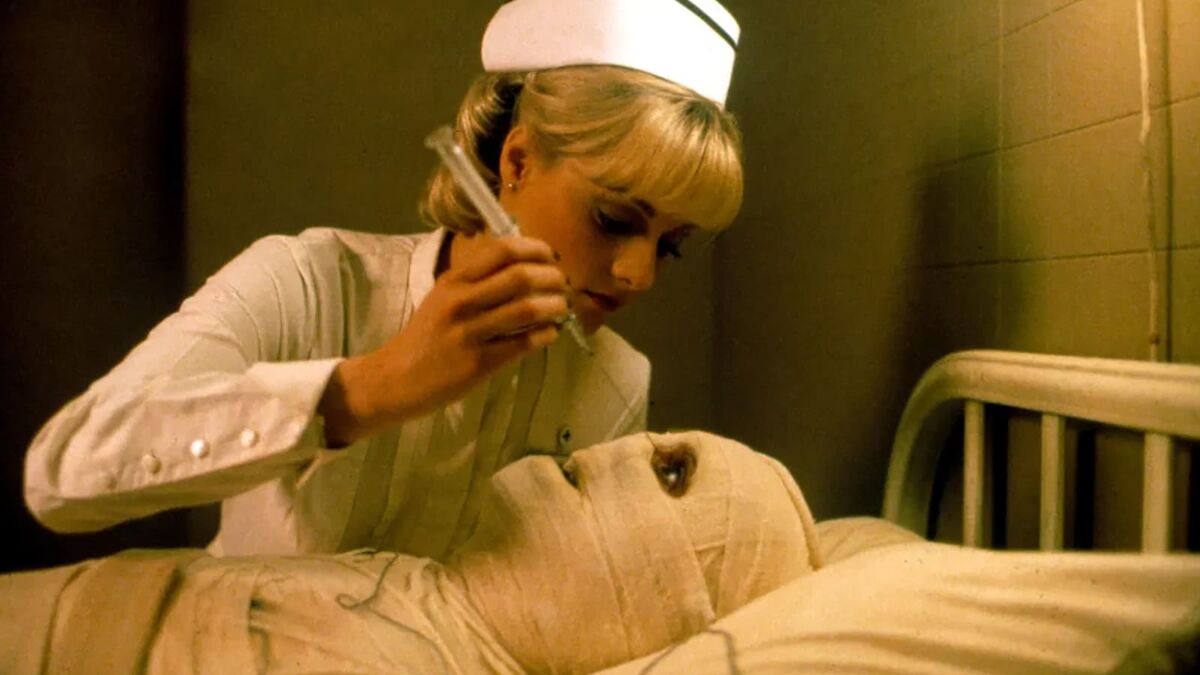
Director: Gary Sherman
Dead and Buried can catch you by surprise, if you’ve never treated yourself to this decidedly weird early-80s story of a charming small town with a weirdly high tourist mortality rate. When these tourists also start coming back from the dead, things become shockingly dark at a rapid pace. The sheriff (James Farentino) tries to investigate, often consulting the town mortician (Jack Albertson, better known as Grandpa Joe in Willy Wonka & The Chocolate Factory) for insight, but nothing seems to make any sense.
The movie plunges our sheriff into the confusing bedlam of this case early on. Nothing makes sense, and it’s the movie’s atmosphere, editing, and music that lifts Farentino’s strong performance even further delirious heights. When the movie shifts to the true motives behind these bizarre murders, the movie just gets more deranged and terrifying as a result. Albertson is particularly haunting as the mortician.
When Dead and Buried reaches its astonishing conclusion, you can’t help but feel awe. The last moment bellows despair and hopelessness. That’s just one alarming moment of many.
32. Angel Heart (1987)
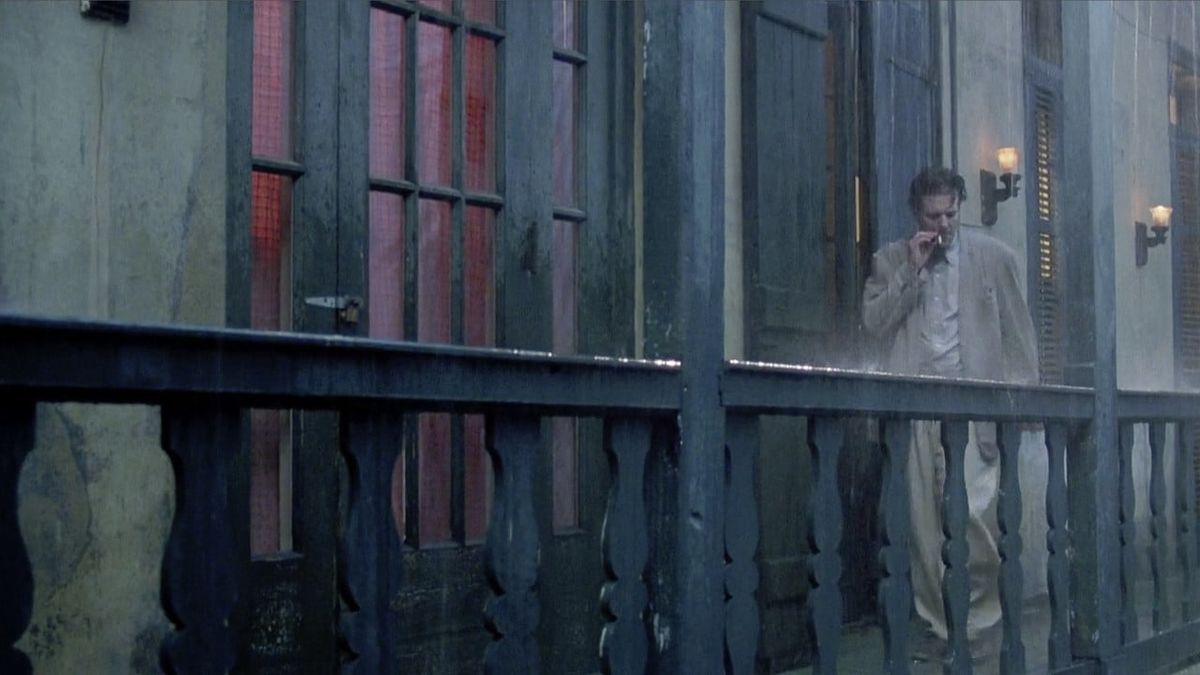
Director: Alan Parker
Hell is very real and shocking in Angel Heart.
A noir story wrapped in one of the most brutal depictions of the supernatural in an 80s horror film, Angel Heart starts grim and just gets harsher from there. It’s not a particularly sympathetic film, with a private investigator (Mickey Rourke in one of his best) looking into the disappearance of a singer. Yet as is often the case with noir and even horror, which rarely meet in a package as intense as this, we do become invested in what happens to the unfortunates who populate Angel Heart.
Rarely is Angel Heart included in the list of Robert De Niro’s best performances. This is perhaps his most notable contribution to the horror genre, playing the mysterious individual who hires Rourke’s private detective. As Louis Cyphre, De Niro gets to put the peak of his talents as an actor into creating a man whose presence is so overwhelming, it bleeds into every dimension of the harrowing world of the film.
31. Possession (1981)
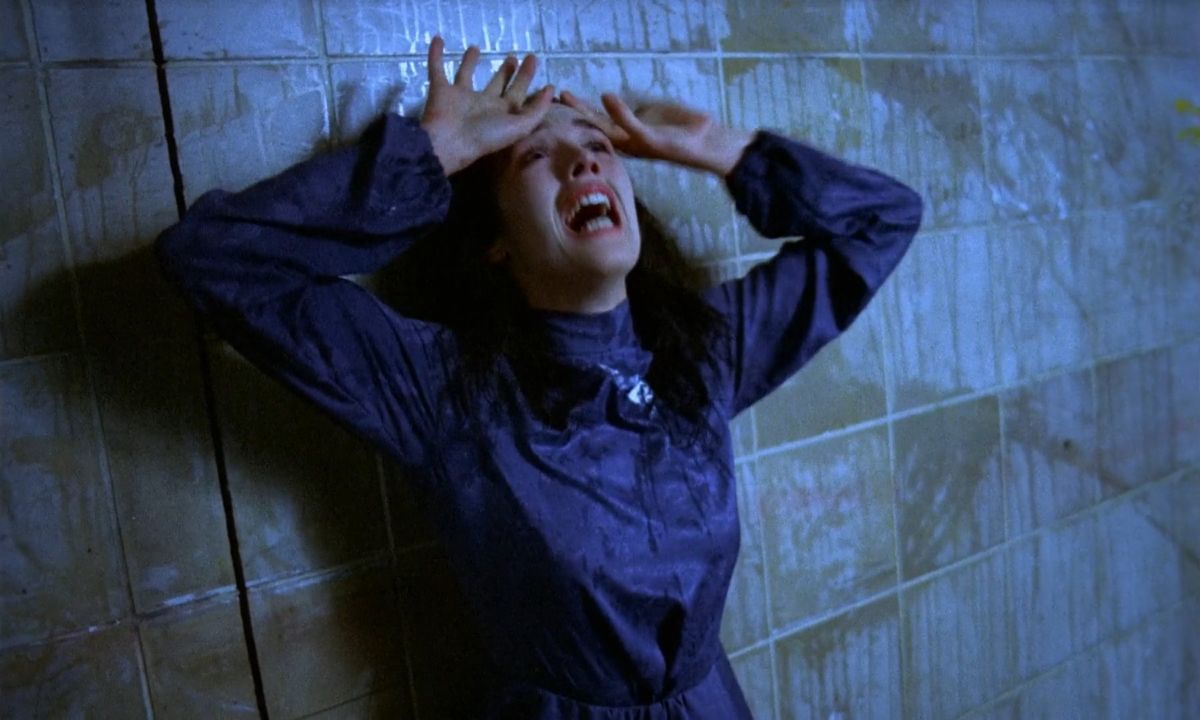
Director: Andrzej Żuławski
Many consider Possession to be one of the most disturbing movies of all time. Possession horror has a lot of influence over the movies we’re going to cover — the vehicles used to take our minds and imaginations to the deeper, uglier places than we’re comfortable with vary dramatically from one entry to the next.
Possession is such an example, with its basic premise of a woman (Isabelle Adjani) seemingly fighting an invader of her tangible soul being just part of what we’re actually watching. Adjani’s performance is such that even without much of a background, we understand immediately that she is becoming unrecognizable to those around her. With this enormous trust in the viewer established, Possession is free to drag us through a bad dream that devours anyone who comes near it.
Possession can leave you feeling as though you’ve just been run through by its malevolent, profound energy. This isn’t going to end well for anyone, you sense, but you can’t look away. This film dares you to repeatedly, but you don’t want to miss a thing.
30. The Babadook (2014)

Director: Jennifer Kent
Yes, the little boy Samuel (an effective and empathizing performance by Noah Wiseman) can get a little exhausting at times in The Babadook. That’s clearly the point in this story of a young, recently widowed mother Amelia (Essie Davis) going through a complex degree of hell. She contends with not only a child struggling with intense emotional and psychological challenges, but also with the increasingly real possibility that her son is being haunted by a malevolent spirit that lives in their basement.
The Babadook is pretty darn scary in pure monster movie terms. The creature in question is built up beautifully by good writing, set design, editing, and pacing, with the final confrontation against it being a memorable horror experience.
What makes The Babadook more unique than its basic appeal is its depiction of not only Samuel’s fight against this monster, but Amelia’s fight to retain her sanity with a child that she can scarcely control. That’s before she even gets to finally knowing that Samuel’s monster is in fact real. The Babadook is unnerving to the extreme.
29. Faust (1926)
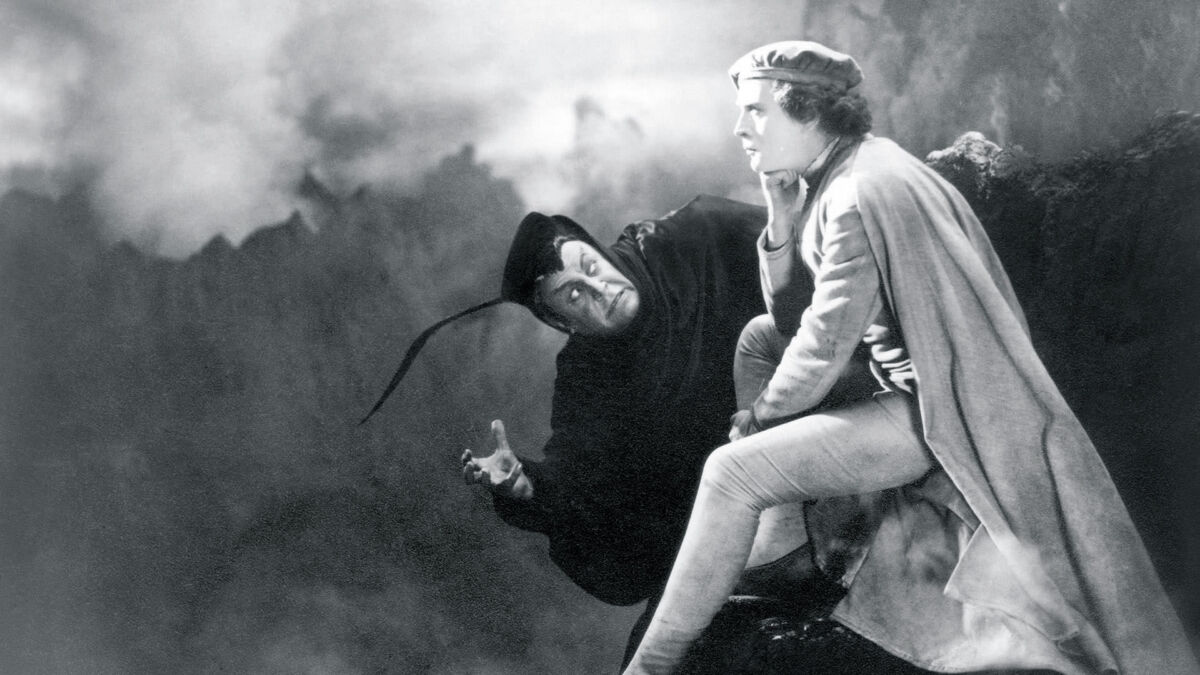
Director: F.W. Murnau
Faust is not the most famous work from the legendary silent film titan F.W. Murnau (that would probably be Nosferatu). However, it might be the scariest of his works. Drawing from the German play by Johann Wolfgang von Goethe, Faust is one of the most well-known stories in not only the horror genre, but in the medium of storytelling itself.
A battle for the soul of a single man (the titular Faust) between heaven and hell creates cosmic stakes that will impact humanity itself. The unfolding of this story is masterful, with Faust subjected to hideous torments and misfortune in the battle to destroy his inherent goodness. There is an accessibility to the story and these performances that gives Faust the ability to appeal to anyone. Even those who may feel as though silent films are not for them.
What makes Faust even more powerful though are the visuals. The film’s approach to actualizing pure evil gives us a definition of intense and haunting that few movies after it have reached.
28. Nosferatu the Vampyre (1979)

Director: Werner Herzog
The original 1922 Nosferatu from F.W. Murnau is an indisputable classic of cinema, period. Silent or otherwise. This 1979 remake from the equally famous Werner Herzog takes the essential elements of its predecessor, and then proceeds to take us on a visual and psychological journey that adds considerable layers of new, almost overwhelming terror to this beloved adaptation of Bram Stoker’s novel Dracula.
As the original silent film drew considerable power from the actor (Max Schreck) playing the Count, Nosferatu the Vampyre gets just as much energy from Klaus Kinski in the role. In a career defined by playing horrific, sometimes pitiable monsters and lunatics, Kinski’s work here is by far his most frightening.
At the same time, Kinski’s performance is one part of why Nosferatu the Vampyre is so profoundly disturbing. Herzog by this point understood how to combine the cerebral horror of what his characters were going through with atmosphere and startling moments of things you can’t unsee. Nosferatu the Vampyre is one of his finest achievements in this arena.
27. Häxan: Witchcraft Through the Ages (1922)

Director: Benjamin Christensen
One of the most infamous horror films of all time, Häxan established a formidable reputation almost immediately upon its release in 1922.
The Swedish silent horror film depicts in brutal terms the history of witchcraft, or more accurately, the history of humanity’s response to the concept of otherworldly powers and experiences. Suffice to say, we don’t handle things like witchcraft very well, and Häxan uses some of the most powerful visuals ever put to film to express just how cruel and hideous we have been.
Indeed, while Häxan plays and operates like a high-minded exploitation film, it’s in fact an unflinching and unforgiving commentary on the nature of the witch hunt itself. Its message is just as chilling as what we see happening on the screen. And what we’re seeing happen on the screen is still some of the scariest stuff ever made for a film.
Häxan isn’t just a history lesson, it’s essential genre viewing.
26. A Nightmare on Elm Street (1984)

Director: Wes Craven
Once upon a time, Freddy Krueger was too busy being scary as hell to be fun.
It may seem like a knock on one of the best slasher movies ever made that it’s resting at the “bottom” of this list, but A Nightmare on Elm Street is a singular masterpiece. Some of the movies that didn’t make the cut are some of the greatest horror movies in the history of the medium itself — 26 is a small, small number when compared to the sheer volume of contenders.
This is important to emphasize with something like A Nightmare on Elm Street: the film that turned Robert Englund as Freddy into a horror icon, and arguably established the foundation upon which studio New Line Cinema would become an industry juggernaut. Everything in this movie clicks, starting with the effectively frightening atmosphere and strangeness that continues to feel grimy and brutal, and certainly exhilarating, on such a low budget.
A Nightmare on Elm Street also features Heather Langenkamp as Nancy Thompson as one of the best horror heroines of all time. Her strength and development over the course of the film helps in its own vital way to create the high stakes necessary for something that’s scary to the very end.
25. The Innocents (1961)
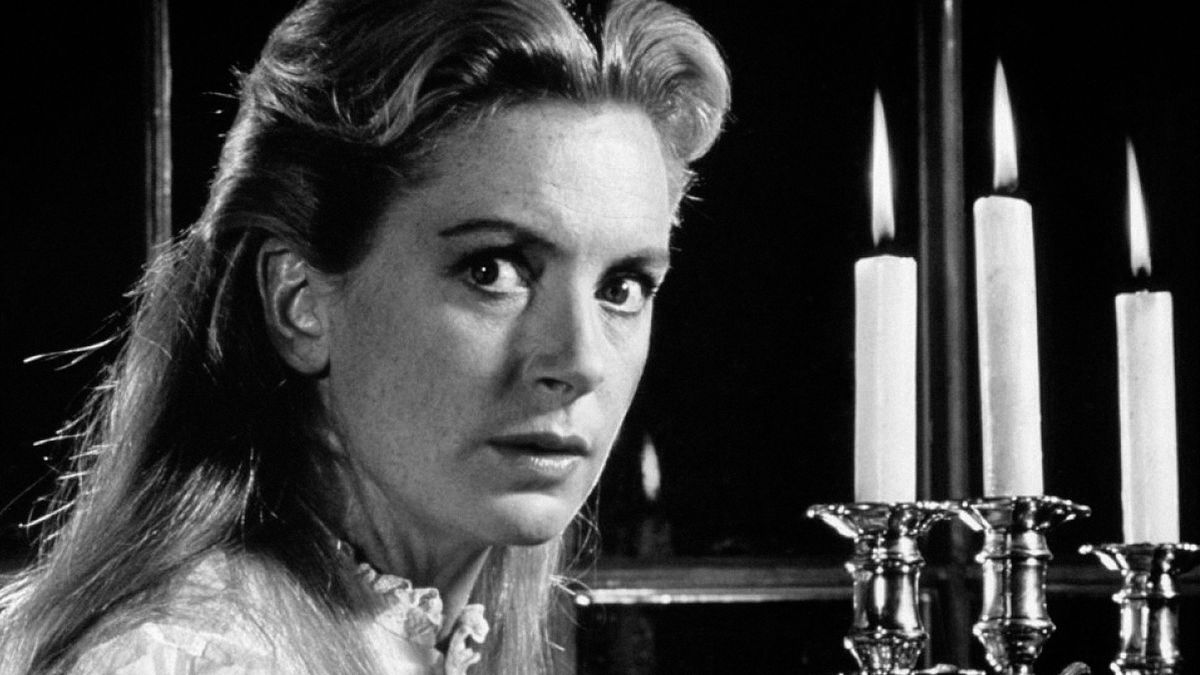
Directors: Jack Clayton
The Innocents hasn’t lost a step over the past several decades.
A woman (Deborah Kerr in one of her strongest performances) takes on the role of governess for two small children in a Victorian household. Almost at once she finds herself unable to shake the notion that someone or something beyond her comprehension exists throughout the property. It doesn’t help either that the children are being weird as hell.
The Innocents is psychological horror at its finest. Paranoia becomes so potent, as the governess slowly comes to learn about the dark secrets buried throughout the history of the home, you may feel yourself trying to shrug off your own nervous breakdown. The Innocents doesn’t jump out at you, as many of the movies in this article do, but it leaves you feeling as though your own sanity has been challenged. The dissolution of the governess into hopeless insanity is something that stays with you for a while.
24. The Wicker Man (1973)

Director: Robin Hardy
A police sergeant (the late, great Edward Woodward) investigates a missing little girl on a small Scottish island inhabited by a reclusive pagan society. The Wicker Man starts very intensely with the feeling that nothing is quite right.
Our protagonist in The Wicker Man is a deeply conservative Christian, becoming slightly and then increasingly unnerved by everything he experiences during his investigation. The intensity of his own belief is disconcerting enough, but he’s also right. There’s a lot going on with the island of Summerisle, and it becomes apparent that none of it is good.
A lot of people like to talk about the ending of The Wicker Man. Despite the movie being released some 50 years ago, the last 15 or so minutes of the film still has the punch of being maddening and sincerely scary in its execution.
However, and this includes an unhinged and charming performance by the legendary Christopher Lee, there are so many other components to The Wicker Man that makes it one of the scariest movies ever made.
23. 28 Days Later (2002)

Director: Danny Boyle
Two movies are largely responsible for kicking off a renewed interest in zombie movies that hasn’t really gone away since. One is the remake of Dawn of the Dead, while the other is the bleak and brutal 28 Days Later. Both are scary, but only one made the cut, and that’s because 28 Days Later not only creates faster and somehow more ravenous zombies, but it also grounds them in a particularly haunting vision of humanity.
It’s also to the strength of 28 Days Later that it so realistically and strikingly portrayed London after the apocalypse. A bike courier Jim (Cillian Murphy) is forced to deal with this world after falling into a coma when things were relatively fine. His discoveries build on not only the hopelessness of everything, but also a kind of tension that 28 Days Later can call its own.
Exceptional performances and characterization throughout 28 Days Later manage the impressive feat of creating stakes, or even a diminished idea of hope, even as we know that Jim’s journey is utterly and unflinchingly doomed.
22. The Orphanage (2007)
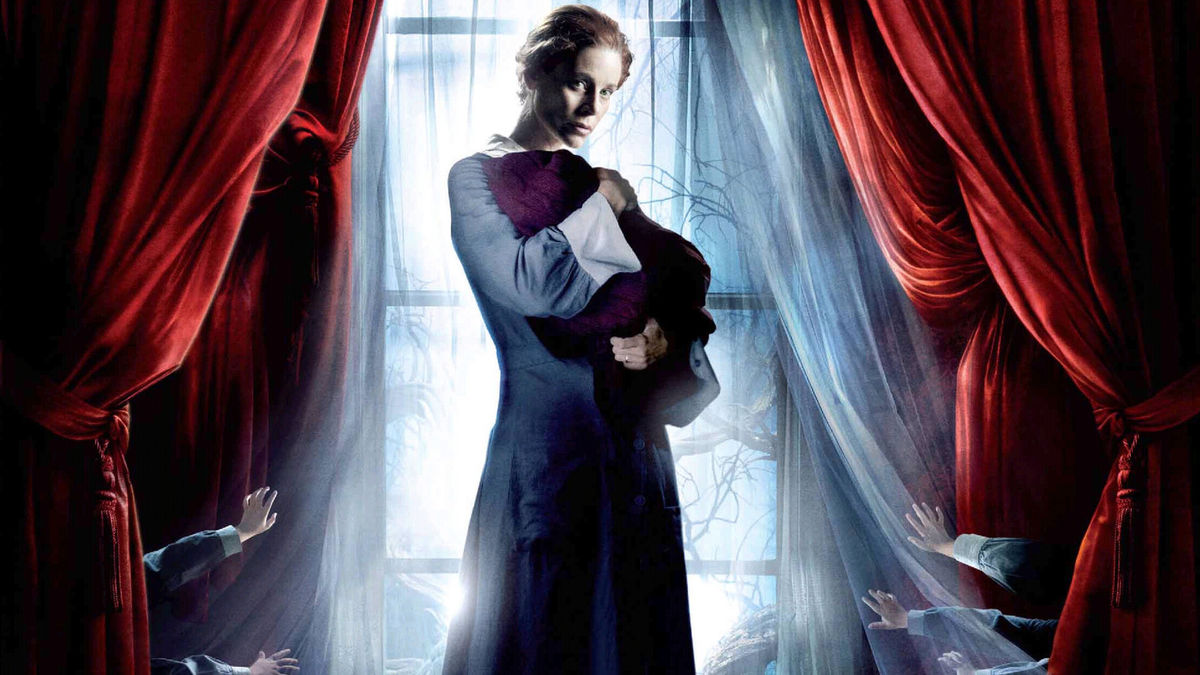
Director: J.A. Bayona
The setup of The Orphanage has a woman named Laura (Belén Rueda) buying the orphanage of her youth with the desire to turn the place into a home for sick kids. We can already imagine a grim gothic homestead with dark, horrific secrets.
The Orphanage opens in a fog of considerable mystery, as well as the foreboding notion that something old and angry breathes beneath the wallpaper. When her adopted son goes missing, Laura’s dreams become clouded with fear and the desperate realization that something or someone is trying to communicate with her.
The Orphanage is a story about repression and reconciliation. The journey to the heart of these themes can make for one of the best haunted house experiences you’ve ever had at the movies. Watching Laura become increasingly frayed as the supernatural disturbances intensify, seemingly in response to the increasing fragmentation and disintegration, is only part of the atmosphere this deeply satisfying horror film creates.
21. The Devil’s Backbone (2001)

Director: Guillermo Del Toro
As personal as it is viscerally scary, The Devil’s Backbone might be the best “pure” horror movie in the career of Guillermo Del Toro. While his movies are often lush and deeply compelling in the characters and their stories, they generally don’t lean into actually being scary. The Devil’s Backbone, one of the earliest works by Del Toro, is an exception.
Without much in the way of the fantasy elements that dominate his later works, The Devil’s Backbone leaves us with a lean, very unsettling ghost story concerning a young boy being suddenly orphaned by the monstrous social and political climate of his time. The boy Carlos soon finds himself being forced to confront not only his reality as he knows it, but the world beyond his own, which is suddenly demanding his attention for initially unknown reasons.
The Devil’s Backbone boasts a tremendous performance from Fernando Tielve as Carlos, putting him into moments that are exceptionally difficult to sit through.
20. The Descent (2005)
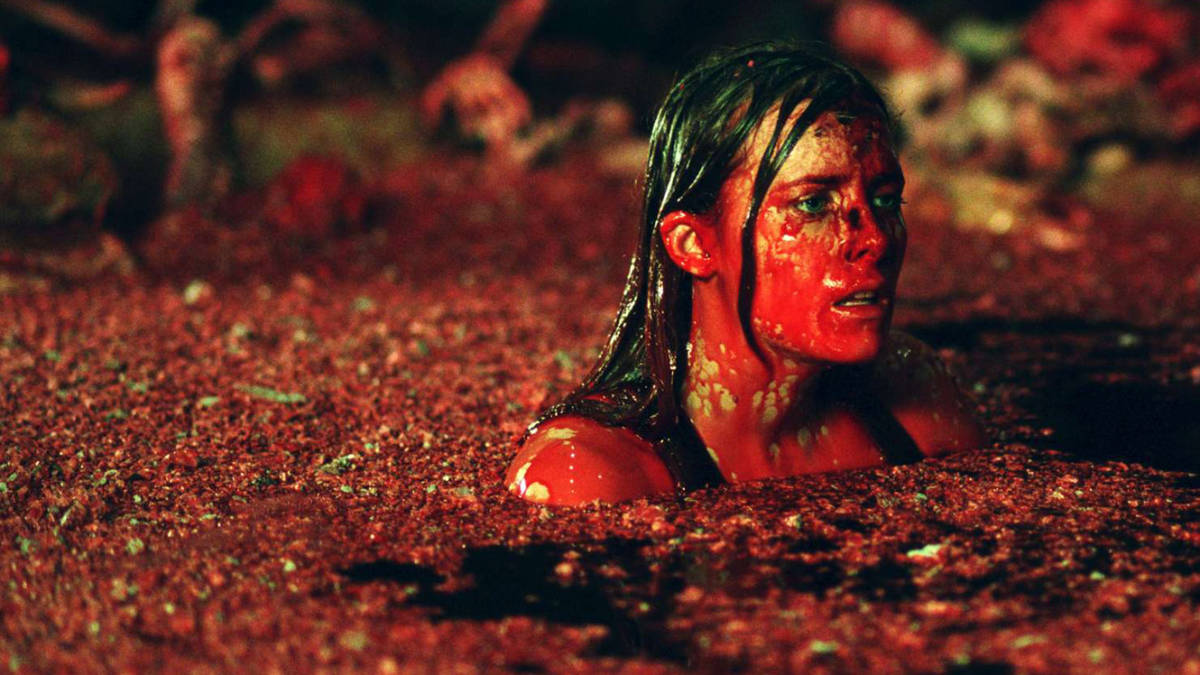
Director: Neil Marshall
You can make the argument that it’s easy to get scares out of trapping a woman named Sarah (Shauna Macdonald) and her friends in an underground space with some sort of monster lurking. However, The Descent continues to absolutely terrify audiences because while it nails that element of its plot to perfection, the film isn’t just an overtly frightening situation.
The Descent establishes Sarah as someone who has endured tremendous trauma in her recent past. That’s hard to forget, as a mystery begins to emerge in a locale that’s already rife with the possibility that something horrible has happened down there.
The Descent works so well because it compels us to seriously care about the people who are in a singular form of harm’s way. Sarah’s situation becomes increasingly dangerous, with something truly monstrous and unknown pursuing her. The Descent never lets up on the tension of watching her try to survive a situation we can scarcely comprehend ourselves.
19. Hereditary (2018)
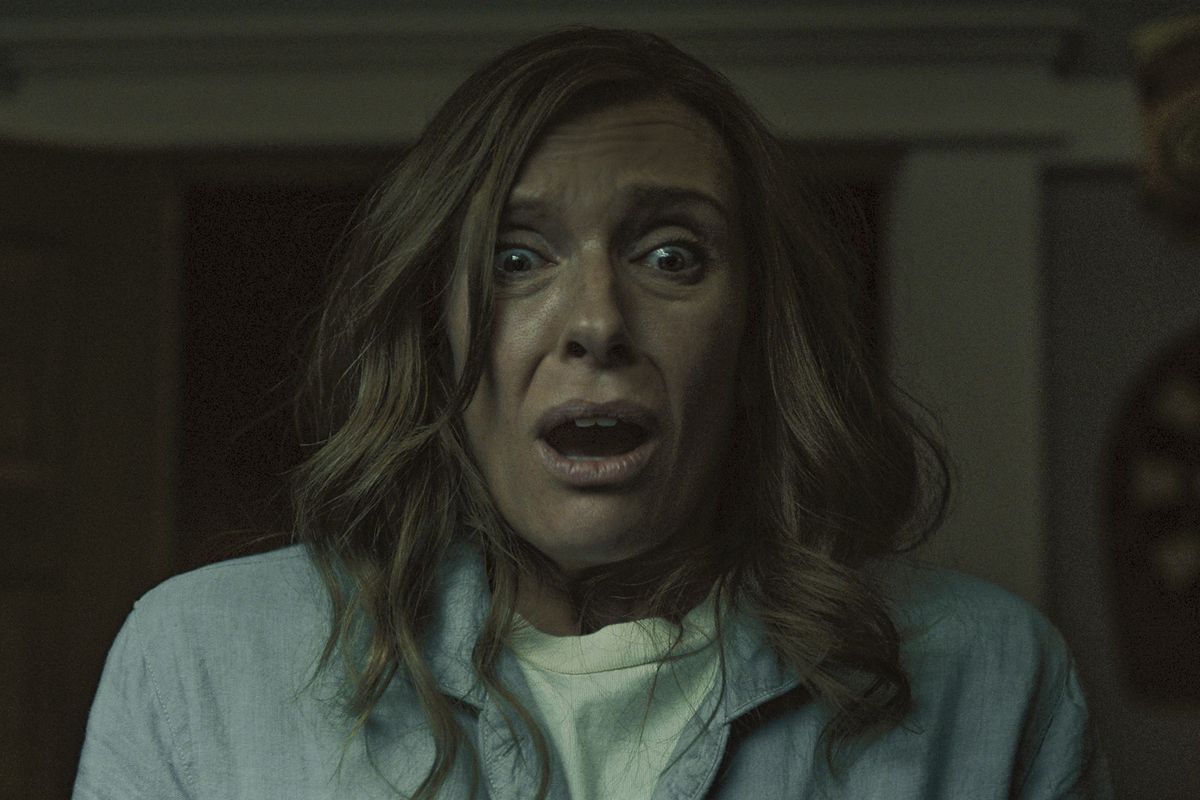
Director: Ari Aster
Ascending to the top of many “scariest movies ever” lists in short order, Hereditary finds its effectiveness being realized in several dynamic ways.
The death of a grandmother has awful and deep ramifications for her family, particularly her daughter (an unforgettable Toni Collette), her husband (a brilliantly understated Gabriel Byrne), and their children. The movie boasts at least two or three scenes in which this family experiences tragedies and revelations that prove difficult for the film to shake off. Not quite jump scares, but exclamation points in the form of an audacious visual choice by the director.
Modern horror movies like Hereditary often seemingly prefer a crescendo of something uniquely unforgettable to a hand suddenly reaching out to you from a dark corner. That’s fine, because with something like Hereditary, we also have complex, engaging characters, a fantastic degree of attention being paid to psychological horror, and a commitment to a steady atmosphere of dread.
18. Event Horizon (1997)
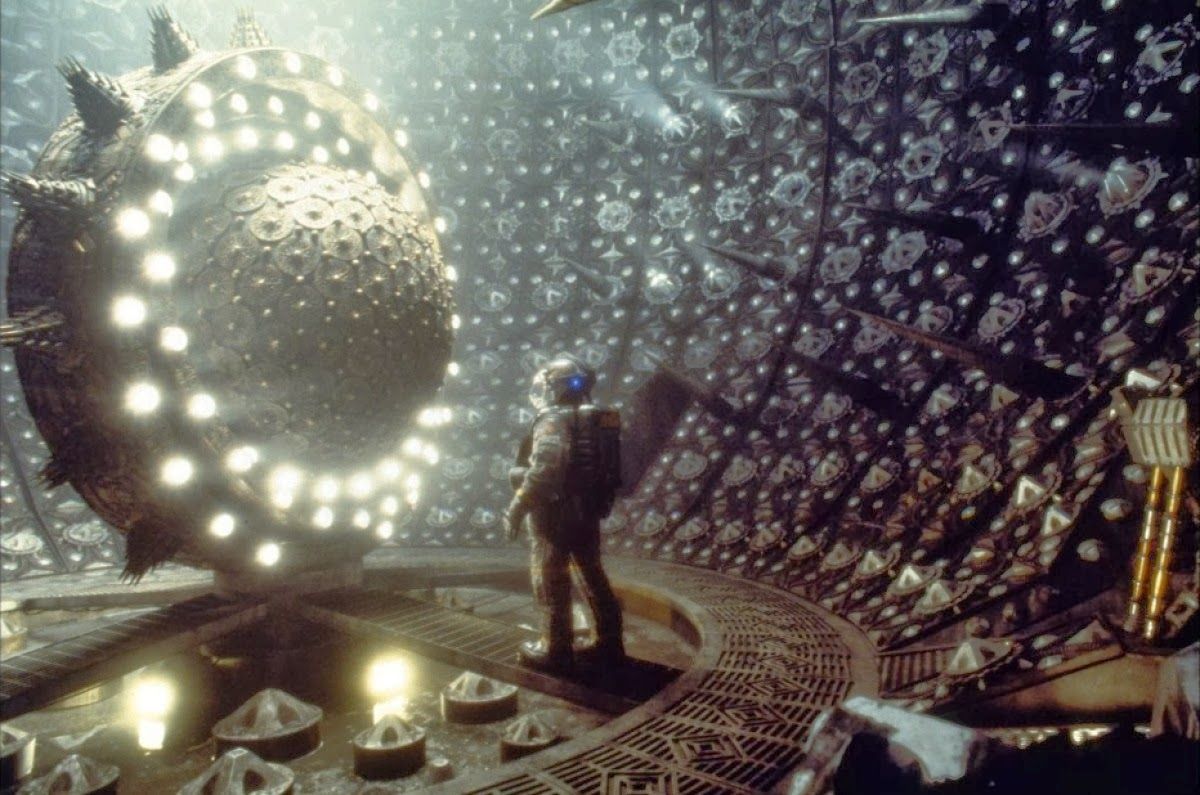
Director: Paul W.S. Anderson
Everything old is new again. Or, as is the case with the 1997 science fiction horror cult favorite Event Horizon, everything old and poorly received is new and scary as hell.
Event Horizon is now considered by many to be a fun, deranged encounter with the damned in the endless expanse of outer space. In some spots, and in terms of creating a disconcerting environment built on the pretense that something truly powerful and ravenously evil can exist in the void of infinity, Event Horizon reveals a truly scary viewing experience.
A spaceship crew and a scientist (Sam Neill, somehow finding new ways to be a fearful lunatic) investigate a spacecraft known as the Event Horizon. The darn thing disappeared a few years earlier, and we’re going to find out just what in the hell happened.
As it turns out, Hell actually did happen. Or a form of it, at least, as Event Horizon soon descends into a chaos you’ll find makes up one of the most disturbing movies ever released.
17. Maniac (1980)

Director: William Lustig
The brutality of Maniac, featuring iconic gore and carnage creations by the master Tom Savini, is certainly part of its scariness. This is a movie that gets at least some of its power from being noticeably and singularly hideous, not just in terms of how the world of the film looks, but in almost every character we meet.
None more so than the character actor folk hero (who also wrote Maniac’s story) Joe Spinell as Frank Zito. There are few souls in the history of cinema uglier than that of Frank, a mama’s boy with a desire to build a collection of mannequin trophies of his victims. Spinell’s extraordinarily uncomfortable performance emphasizes that again and again.
Maniac creates despair in all of these elements, unleashing them in the form of Frank’s furious killing of people, particularly women, and getting ever deeper into your psyche.
16. Pulse (2001)
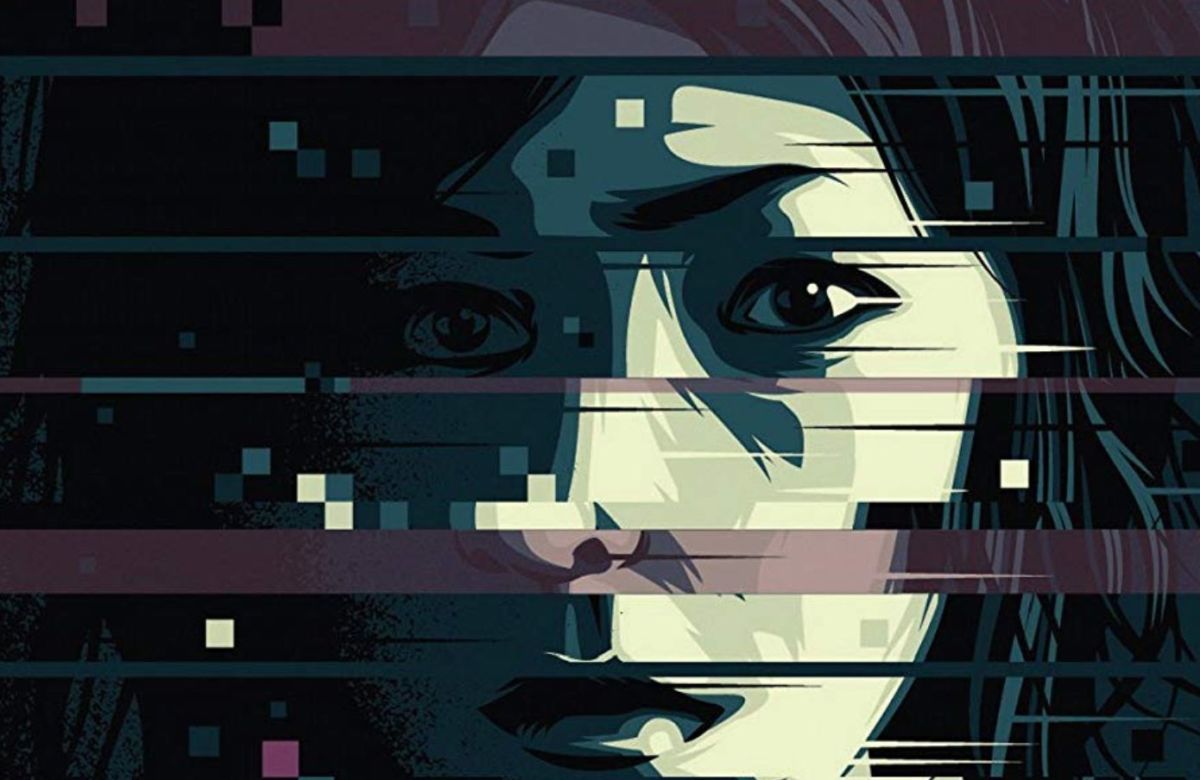
Director: Kiyoshi Kurosawa
Setting up the internet and technology itself as conduits for the endless hunger and loneliness of the departed, Pulse is one of the scariest visions of the apocalypse you’re ever going to watch.
A rash of suicides throughout Tokyo are occurring without a fathomable explanation. The characters of Pulse, seemingly unrelated to one another, struggle to make sense of a mystery that may prove to be more than anyone can actually handle.
Pulse has some notable and well-timed jump scares, but it’s the descent into a new world that completely eradicates the old guard (that would be us) and how it’s told at a languid pace that really gets to you.
By the time we get to the last 15 minutes, we’ve emotionally exhausted ourselves, and in a way that makes our connection to Pulse something different and profoundly troubling. The film’s final moments of cosmic horror may just leave you in shambles.
15. The Vanishing (1988)

Director: George Sluizer
After his girlfriend Saskia (Johanna ter Steege) disappears during a service station stop on their vacation, Rex Hofman (Gene Bervoets) embarks on a truly harrowing journey to find her. As we travel along with him in this particularly grim noir thriller from the Netherlands, we’re never far from the sense that something horrible has happened to her. The movie essentially guarantees this from the very nature and tone of any synopsis you might read beforehand.
Of course, the exploration of the premise is where The Vanishing becomes a masterwork of the specific achievement of being very, very scary. The menace and fear of unknown forces controlling Rex’s efforts, which are consistently met with failure, dead-ends, and the realization that the answer is now more important than anything in his life, propel The Vanishing into the kind of tension that can actually enhance your own claustrophobic feelings.
The Vanishing’s ending highlights this claustrophobia with a conclusion that is truly and utterly haunting.
14. Henry: Portrait of a Serial Killer (1986)

Director: John McNaughton
Henry: Portrait of a Serial Killer can feel more like a true crime documentary than a horror movie at times, but it still meets the basic requirements for the genre.
Besides that, there really isn’t any other genre that makes sense for horror for something as violent and depraved-on-its-grimy-surface as Henry. It’s not only one of the scariest movies of all time, but also perhaps the most realistic of anything featured here.
It doesn’t hurt the realism of this story of a serial killer (the movie’s title is very clear on what you’re going to get) named Henry that it’s loosely based on real-life monster Henry Lee Lucas. However, the movie is really its own horrible entity. In this context, “horrible” is simply being used to describe the intentionally casual tone the film takes to Henry’s relationships with the tragic or hideous people in his life, to his attitude towards life, and to the “work” he considers to be so important.
13. Get Out (2017)
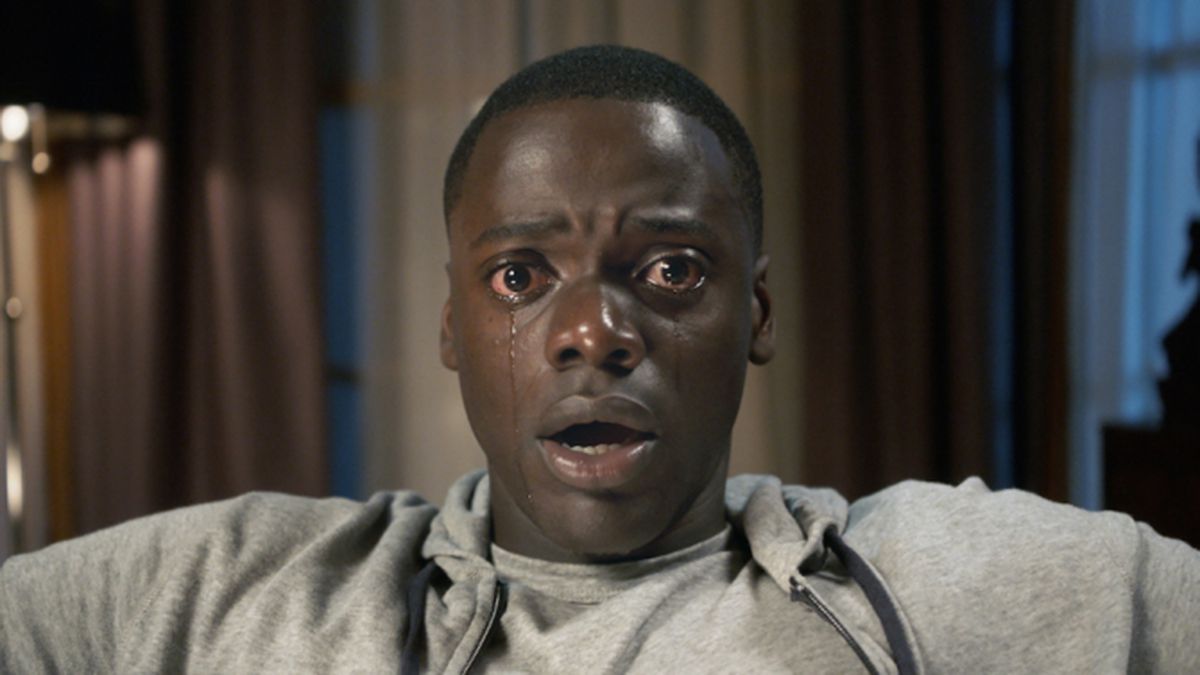
Director: Jordan Peele
A writer and performer mostly known for comedy, Jordan Peele’s first horror movie Get Out proved to be popular with just about everybody. Some of the scariest horror movies are the ones that are very clear in their social and political commentary, finding ways to make that scary on par with the actual horror tropes they’re also utilizing.
Get Out is one of the strongest examples of this cooperation in recent memory, with the story of a young black man named Chris (Daniel Kaluuya) meeting the wealthy and entirely-too-polite family of his white girlfriend Rose being a perfect starting point. The film begins building palpable tension almost immediately, with the actual horror movie components emerging slowly but steadily. Everything gets nightmarish from there on the visual and atmospheric fronts.
However, without Peele’s attention to making some very striking points on the reality many experience while being black in America, Get Out would just be a loose collection of genuinely unnerving scenes and performances.
12. Hellraiser (1987)
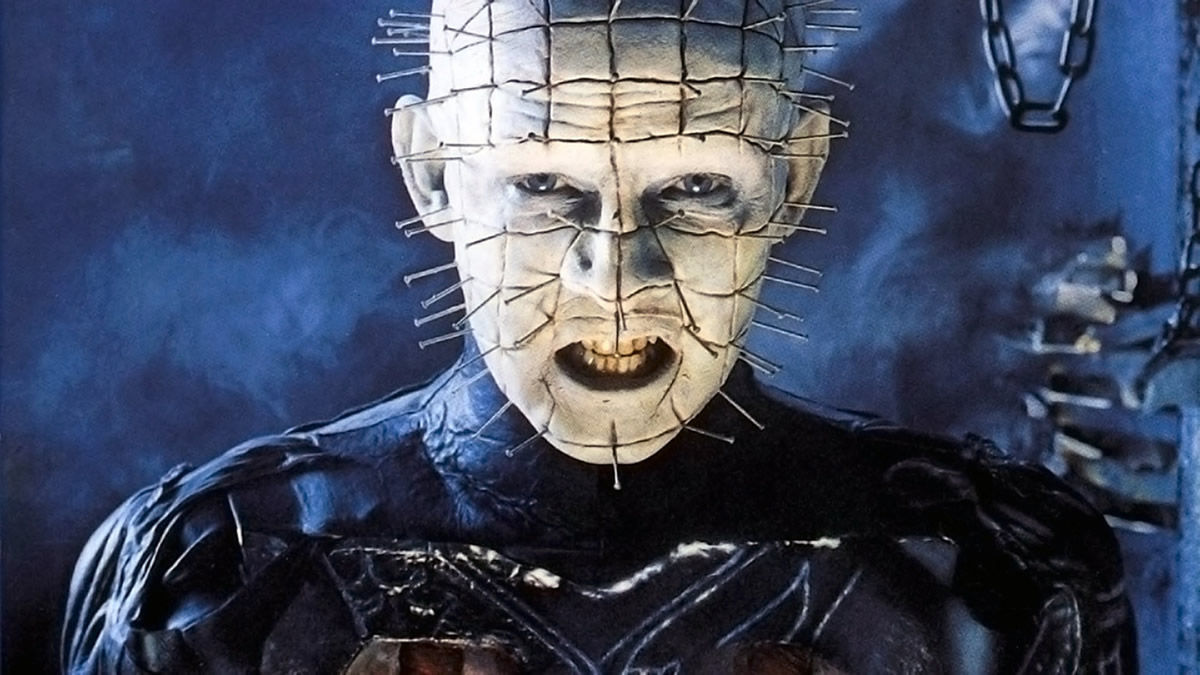
Director: Clive Barker
A mysterious puzzle box falls into the hands of a sexually disturbed man named Frank (Sean Chapman). He solves the box, gets to experience the brisk sensation of being ripped apart by hooked chains appearing seemingly out of nowhere, and disappears. Turns out Frank went to Hell, but don’t worry because he’ll be back pretty soon.
To those who have never seen Hellraiser, Frank’s going to be missing some skin when we meet him again, and this visual is just one of the ways in which Hellraiser disturbed audiences in 1987. Hellraiser is disturbing not just for its visuals and gore, which are uniquely executed and profoundly disgusting, but for showing a type of humanity that is as dark as it is gleeful in its vile appetites.
Frank’s brother (Andrew Robinson) soon moves into his old place, bringing his daughter Kirsty (Ashley Laurence) and wife Julia (Clare Higgins). Of course, things being what they are, Julia’s past relationship with Frank becomes the foundation of Frank’s desperate bid to return to the mortal realm.
Unfortunately for the men Julia seduces in his honor, resurrection seemingly involves a body count and gallons and gallons of blood. It also eventually means a confrontation with a demonic priest entity known by fans as Pinhead. A physical manifestation of what’s waiting for those who open the puzzle box, Pinhead is pure malevolent pleasure fully realized.
This isn’t the first time we’ve talked about the Hellraiser series, but performances and a deranged depiction of devotion emphasize why this first entry remains the best.
11. It Follows (2014)

Director: David Robert Mitchell
It Follows is one of the most compelling subversions of genre expectations of the 2010s. Taking the horror inherent in being pursued by something that doesn’t stop until the task is finished, It Follows creates a terrifying world in which nothing can actively protect you. There are no safeguards — you simply run and survive until you can’t run anymore.
Teenage Jay’s sexual encounter with a relative stranger (her very new boyfriend) leaves her with a curse. The movie doesn’t spend too much explaining the nature of this curse. It simply sets Jay, played with memorable anxiety and confusion by Maika Monroe, upon running as fast as she can from whatever is pursuing her.
But she can’t get away. Of course not. And she certainly can’t run forever. The buildup of these questions to the film’s transformative climax is almost madness-inducing.
10. Dawn of the Dead (1978)
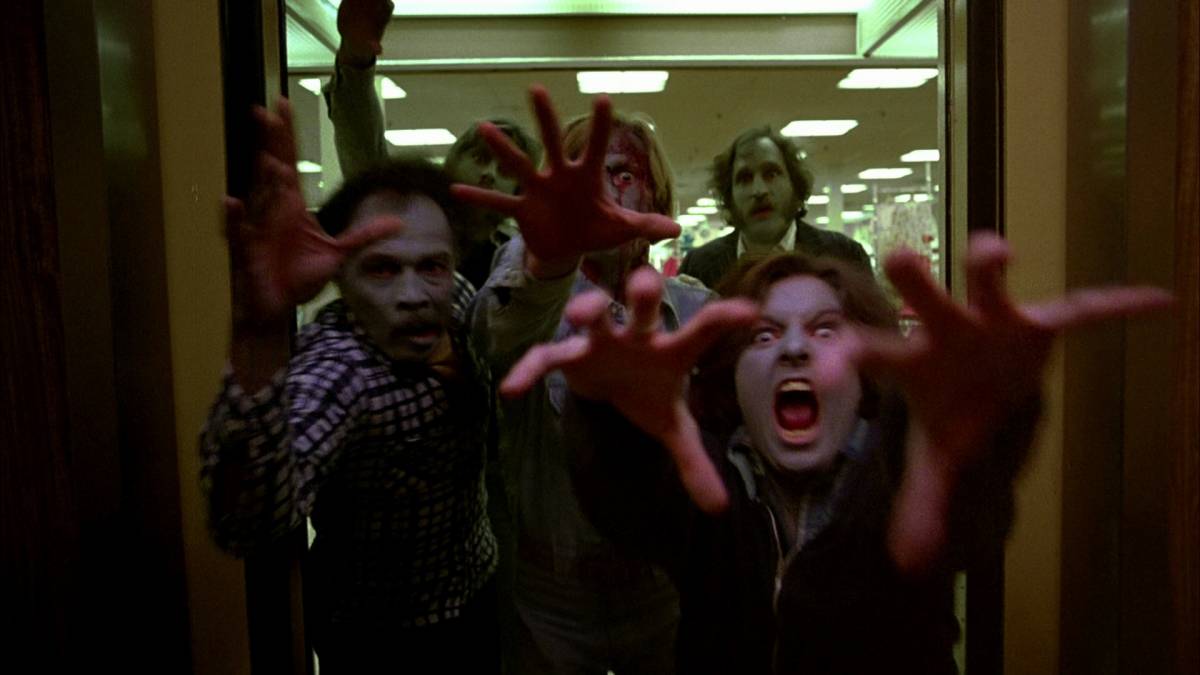
Director: George A. Romero
Dawn of the Dead, George A. Romero’s follow-up to his genre-defining 1968 classic Night of the Living Dead, can seem a little slow when compared to contemporary zombie movies like 28 Days Later. The movie more often than not moves at a gradual pace, punctuated with a handful of key moments of zombie chaos and mass destruction, the most intense of which occur at the beginning and end of the movie.
However, Dawn of the Dead gets under your skin in a variety of ways. Whether our protagonists are participating in a siege of a building filled with zombies, or wandering around a department store looking at new outfits, Dawn of the Dead is never not a dizzying, disconcerting experience. It presents the end of times as an organic, believable burn that consumes everything and cannot be stopped in any form or fashion.
Our protagonists eventually make their way to a shopping mall, where they try to stay distracted while the world continues to crumble all around them. Even in these gentler, sometimes humorous moments, Romero’s extraordinary ability to create a situation in which hope has completely left town remains front and center.
9. Suspiria (1977)

Director: Dario Argento
Obviously, components like cinematography, music, and set design are vital to the energy and appeal of many of the scariest movies being covered here. Suspiria is a good emphasis on the fact that the director is only one part of what makes these films so powerful and so memorable.
Certainly, the Italian horror maestro’s most famous movie bears his influence in every possible way, but it would be impossible to talk about just how electrifying a horror experience Suspiria is without also mentioning the soundtrack by Goblin.
A young woman (an amazing Jessica Harper performance) begins studying ballet school in Germany, shortly after another student at the school has been murdered under ferocious and mysterious circumstances. She soon finds herself targeted by these same forces, and as you can imagine, her life becomes a waking nightmare at the hands of what we learn is one of three witches. Suspiria would be the first in Argento’s famed Three Mothers Trilogy, and it stands as the entry that grips audiences the hardest. To watch Suspiria in particular is to visit a world that feels like a sadistic, beautiful fairytale.
Does it all make sense? Well.
Is it all terrifying in a way that can only come from facing the total unknown? Yes.
8. Candyman (1992)
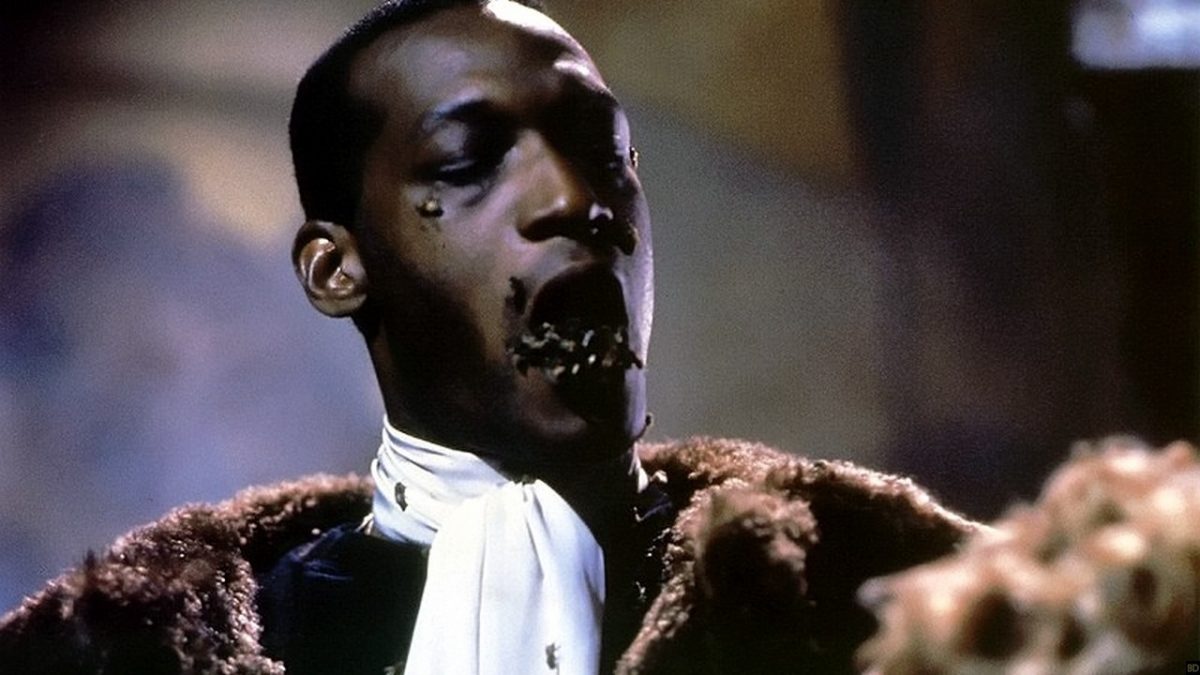
Director: Bernard Rose
In the early 90s, films like Candyman found success by combining different elements to create something quite different from what audiences were generally expecting from horror at this point.
Candyman himself, played to iconic perfection by the legend himself Tony Todd, is the star of this show. He’s just not quite the standard boogeyman people had come to enjoy. There are no quips. There is no sense of irony or humor, as he sets about stalking a graduate student (Virginia Madsen, who is absolutely perfect) who has begun investigating the story behind his urban legend. There is simply a force of anger and racially-motivated vengeance who demands the world know his story.
As Candyman brilliantly explains, he’s more than just a ghost who stabs people to death when they look into a mirror and say his name five times.
7. Audition (1999)
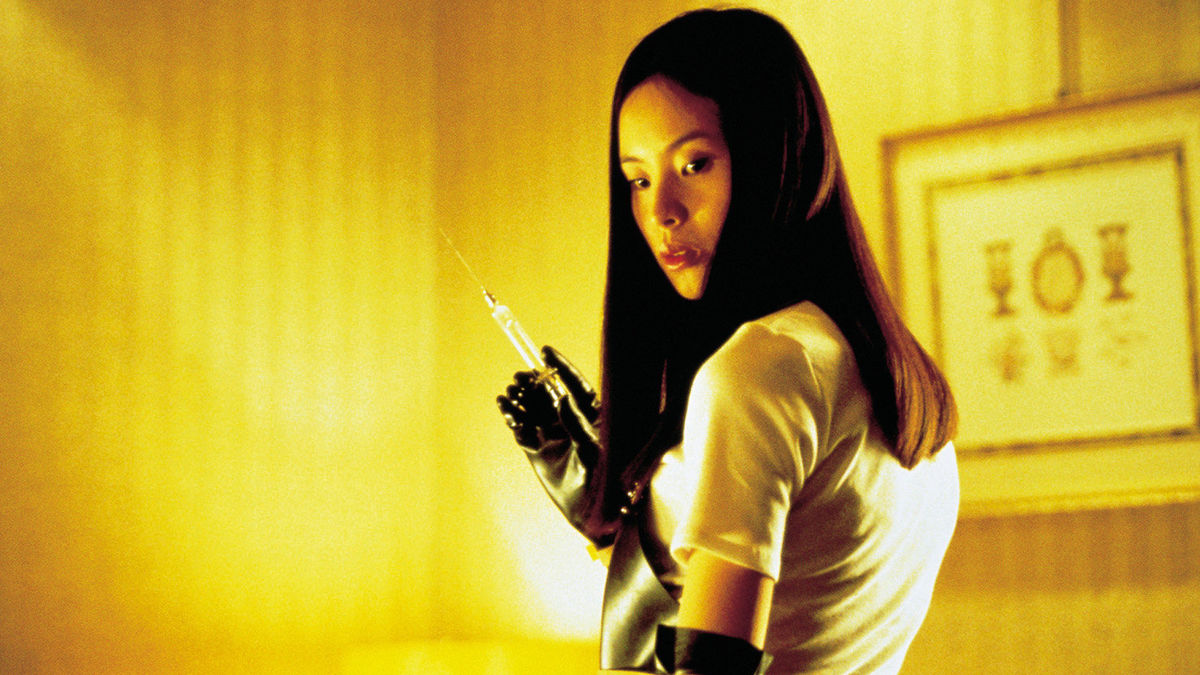
Director: Takashi Miike
Audiences around the world had never seen anything quite like Audition in 1999.
This is a movie that goes out of its way to lull us into a false sense of security, as the story primarily focuses on a widower named Aoyama (a strong performance by Ryo Ishibashi) who is getting back into the dating scene. The “audition” process his film producer buddy utilizes to help him leads him to a young woman named Asami. Sure, it’s all a little creepy in of itself, but Aoyama is basically a decent person. He’s a good father who ultimately just wants to meet someone.
Does he deserve the shocking hell that comes directly into his life and home that follows meeting the charming, quiet Asami for the first time? That’s entirely up to you.
Audition starts strong with diffusive humor, which soon transitions into strangeness. This in turn eventually shifts to elaborate, unforgettable terror.
6. Halloween (1978)
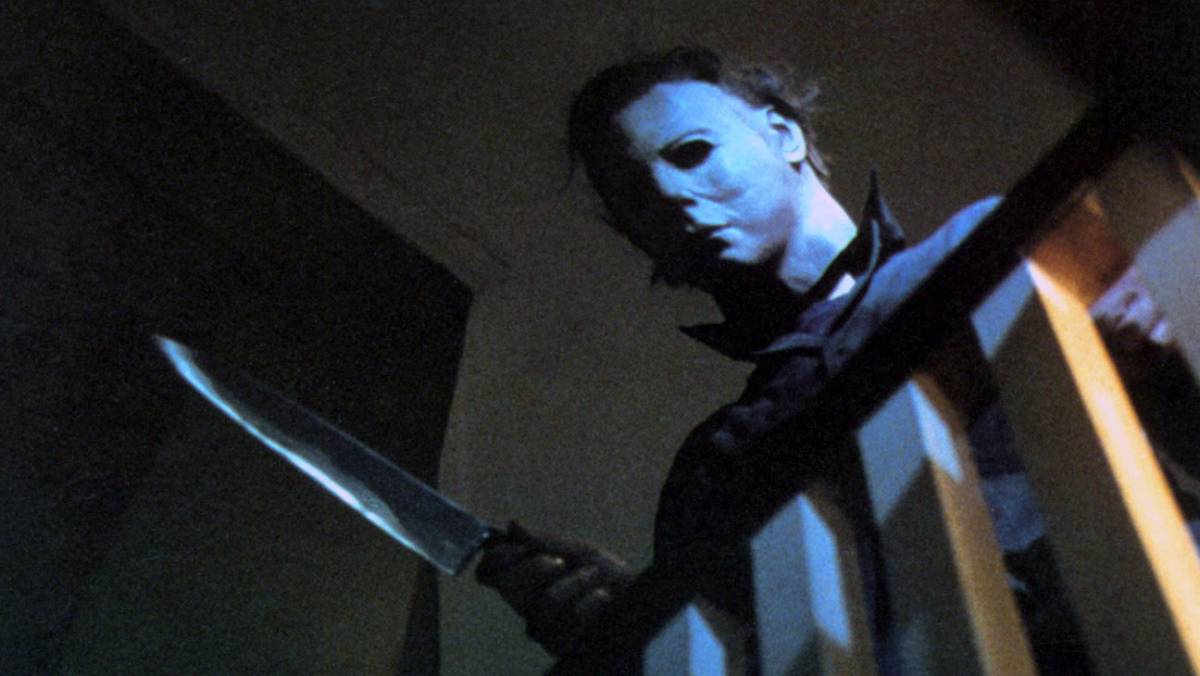
Director: John Carpenter
Halloween was immediately a hit in 1978, owing to a surprisingly robust release for an independently-made horror film. It was a financial powerhouse, while earning rave reviews from critics and audiences alike. It’s still widely considered by most to be among the scariest films of all time.
If you’re a long-time horror fan, you may disagree. Halloween can seem a little lackluster when compared to other films that routinely make lists such as this one. The consensus remains that this story of a masked killer named Michael Myers getting into the spirit of Halloween by murdering some babysitters still has the force of something that speaks efficiently and beautifully to what we’re afraid of.
Is it the tension built by the legendary John Carpenter right from the start? Is it Carpenter’s indelible musical score? Outstanding performances by Jamie Lee Curtis and Donald Pleasence? Is it the empty stare of eternal darkness shimmering through the eyes of a William Shatner mask? Who can say, but it all seems to work like a charm.
5. The Texas Chainsaw Massacre (1974)
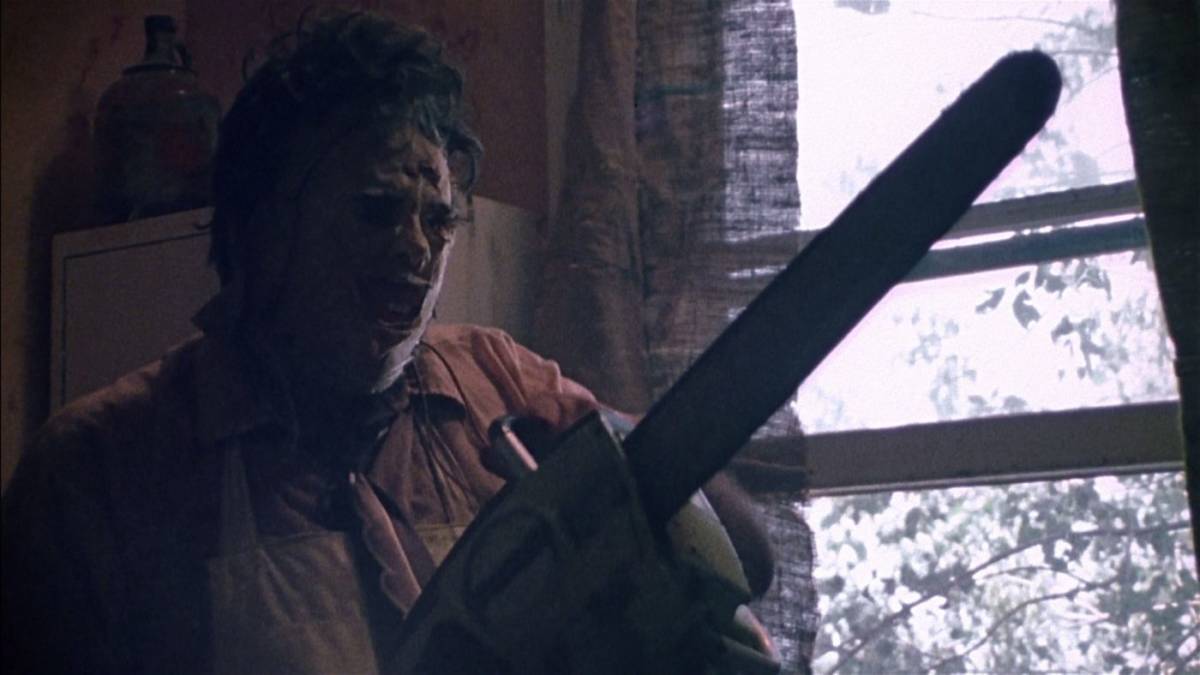
Director: Tobe Hooper
The Texas Chainsaw Massacre is more than just proof that there can be things even scarier than an ongoing gas crisis. It’s one of the first slashers, and it’s also one of the best examples of rural horror in film history. An incredible film that utilizes the turbulent time period to create something grounded, but not on altogether firm footing either. The instant-recognition title alone promises something completely deranged is about to happen.
For millions of people, The Texas Chainsaw Massacre delivers on every bit of the menace promised in the opening narration by a then-unknown John Larroquette. Yet the movie is not particularly gory, nor is it any more violent than many of the films we’re discussing here.
So where does its energy come from? Why do people continue to revisit the story of a group of young people whose lives are reshaped abruptly by a group of cannibals living in the middle of nowhere in Texas? It’s difficult to describe but instantly simple among those who consider TCM to be a masterpiece.
4. The Thing (1982)

Director: John Carpenter
If you pride yourself on having a weird sense of humor, there might be something really twisted and funny about everything that happens in John Carpenter’s 1982 reimagining of a science fiction classic. It’s a comedy of very dark errors for sure, when an arctic outpost accidentally stumbles upon a flying saucer that had crashed into the region centuries ago.
The creature flying the ship has since woken up, and an intrepid gang of cranky, isolated scientists and other professionals, led by the likes of Kurt Russell, Keith David, and Wilford Brimley, is about to experience their own unique invitation to the potential end of the world. The Thing would be the first in John Carpenter’s Apocalypse Trilogy, and it’s generally considered to be the best of those three very scary movies.
The Thing is scary on several levels. Beginning with the fantastical and thoroughly horrifying special effects from Rob Bottin, John Carpenter’s remake also benefits from deriving tension from not only the men being pursued, but also from the paranoia after discovering the creature can disguise itself as one of them. It realizes every ambition to be scary flawlessly.
3. The Exorcist (1973)
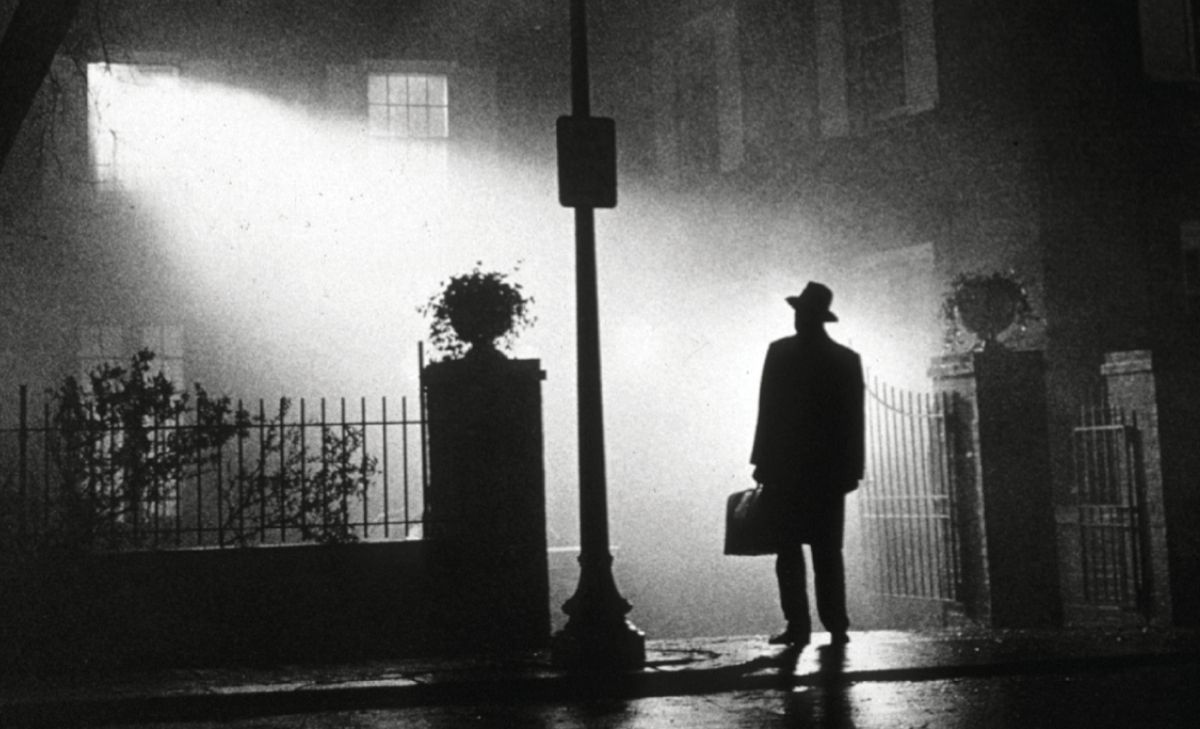
Director: William Friedkin
Can the critical and commercial juggernaut The Exorcist still scare audiences five decades later? As the movie continues to be discussed and debated as one of the scariest horror movies ever made, its strengths are still very much apparent. If for no other reason than for the fact we’re still talking about this story of a little girl (Linda Blair) becoming possessed by a powerful demon, and the priests who work to save the child as her soul depends on it.
Long after the profound buzz the movie generated in 1973 has faded, The Exorcist stands on its own merits. It creates a perfect world for demonic forces to pick apart.
There are a lot of different things about The Exorcist that still grip the viewer. It really comes down to the movie’s performances by Blair, Ellen Burstyn, Jason Miller, Max Von Sydow, and Lee J. Cobb. They give weight to the story when it shifts from dull suburbia to literal Hell on Earth, but it’s also the direction, editing, and set design work that truly propels The Exorcist in its portrayal of what happens when supernatural forces rip apart everything you know and love.
2. The Shining (1980)

Director: Stanley Kubrick
Yes, yes, Stephen King doesn’t like this movie. We know. It’s not a secret, and it ultimately distracts us from the qualities in Stanley Kubrick’s take on The Shining that makes this movie a different beast entirely from its source material. The Shining really only uses the novel’s story as a foundation for other things that interested Kubrick more. An alcoholic teacher and writer goes over the edge when he brings his wife and son with him to work as a winter caretaker for a secluded hotel in the Colorado mountains.
Kubrick uses the basic premise of The Shining to create something that is relentless in its pursuit of creating fear, uncertainty, and even despair at the voluminous savagery being visited upon Wendy and young Danny. The Shining almost suffocates you in madness and atmosphere, and all without ever making it clear to us whether or not we’re even dealing with ghosts.
We probably are, but The Shining, beyond incredible performances by Jack Nicholson, Shelley Duvall, and Danny Lloyd, never lets us get comfortable with our assumptions.
1. Alien (1979)

Director: Ridley Scott
Alien takes a few minutes to really get going. In fact, during the first 20 or so minutes of a film in which the crew of a commercial starship investigates a strange distress signal, not a whole lot seems to happen.
We meet the crew. We get to genuinely like them before long. The characters, particularly Sigourney Weaver as Ellen Ripley, lend a lot to why Alien is so profoundly scary. Their investigation starts to go really, really well when the discovery of a room filled with strange eggs leads to the introduction of a dangerous, wholly unknown creature.
When that infamous dinner starts to unwind, you know you’re in for a roller coaster of psychological and physical terror in the claustrophobic setting of the starship. It’s easy to understand why this movie is so upsetting to so many, just because it forces us to contend with a visually startling monster in close quarters that are surrounded by the vast emptiness of the cosmos. There’s also plenty of body horror, and not just in the ways you might think.
In a franchise filled with mostly good movies, only Alien can boast being scary on a level that puts it above everything else we’ve covered here.
READ NEXT: 10 Underrated Horror Movies That Deserve Cult Classic Status
Some of the coverage you find on Cultured Vultures contains affiliate links, which provide us with small commissions based on purchases made from visiting our site.

